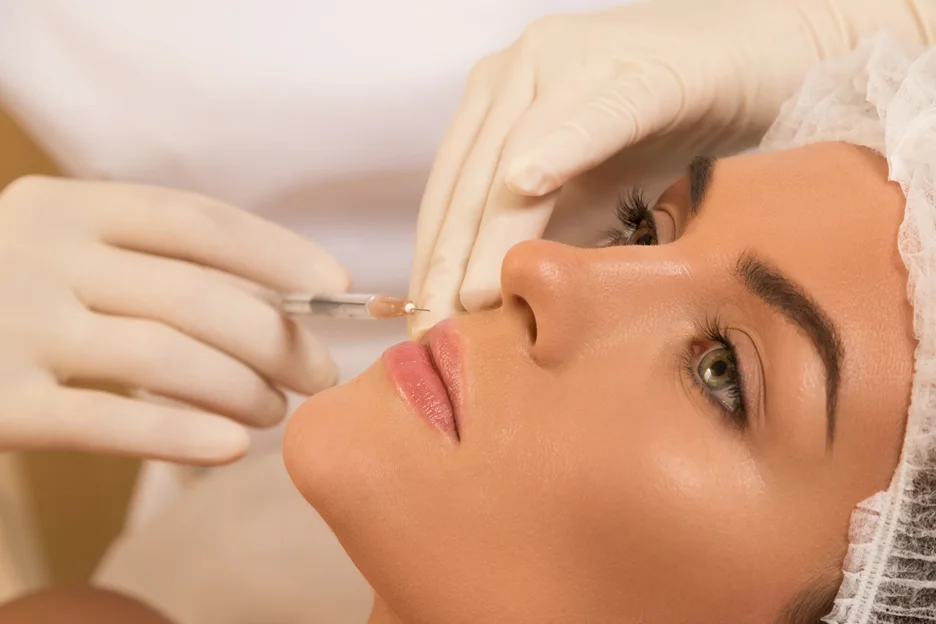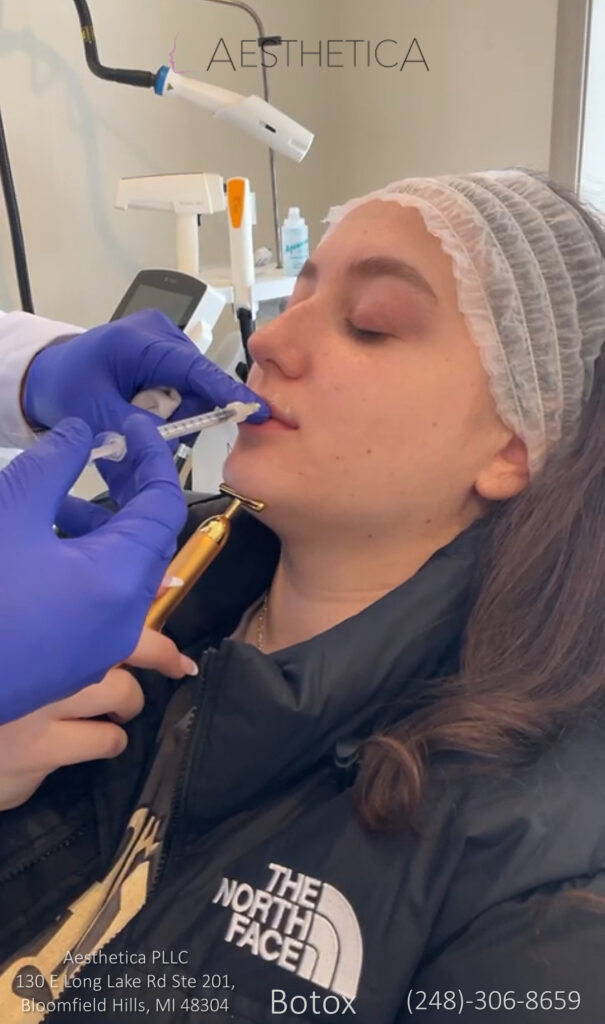
Botulinum toxin or Botox is widely used by professionals on their patients for smoothing out fine lines, wrinkles, and aged skin. It’s also being used for various medical conditions that affect the transmission of signals of the nerves. In fact, there are numerous problems that one may experience daily that can actually be treated with Botox.
So can Botox help treat people who sweat while eating? Botox can be used to treat gustatory sweating or the sweating that occurs on the forehead, neck, and upper lip while eating. Botulinum toxin type A is a neuromodulator that’s known to freeze the muscles in areas where it’s injected by blocking the nerve transmissions between muscles.
Aesthetica can assist you with all your beauty needs, helping you achieve your maximum beauty and aesthetic potential. Call or contact us today to learn more about our cosmetic services.
Excessive sweating while eating is also known as gustatory sweating or Frey’s syndrome. Botox is prescribed by doctors to patients who suffer from this condition as the neurotoxin’s nerve-blocking properties can block the activity of the synapses of the sweat glands and the salivary gland.
Patients report a high success and satisfaction rate with Botox for sweating when eating. Botox has enjoyed 3 decades-long good reputations regarding its efficacy and safety for a number of different uses.
For the treatment of gustatory sweating or Frey’s syndrome, around 10 to 15 units of Botox may be injected in areas such as the forehead, neck, cheekbones, upper lip, and chin, where most sweat glands are located on the face. Injecting the neurotoxin directly into these areas efficiently delivers the nerve-blocking toxin to the problem areas.
It can be easy to confuse regular sweating with gustatory facial sweating. Some people experience sweating while eating due to normal conditions such as a warm environment, humid air, and eating spicy food. This can make it difficult to determine if one has this medical condition.
The main symptom of gustatory sweating is sweat production on the forehead, upper lip, neck, and cheek area when eating food. This especially includes non-spicy food. Some patients may even experience sweating just while thinking about food. The problem lies with the parotid gland, which causes the patient to sweat and flush, especially after producing saliva when expecting or while eating a meal.
Gustatory sweating is often experienced as a side effect of parotid surgery In other cases, it can be a result of trauma to the gland through injury. As the nerves try to heal themselves, they may get mixed up with other nerve reactions causing unwanted sweating. It can also be a secondary effect of other conditions like diabetes.
Doctors use the Minor test to diagnose gustatory sweating disorders. This test involves covering a patient's face with iodinated starch powder. The patient is then given food that’s usually sweet or sour, but not spicy as these can induce facial sweating in normal cases. If the patient produces sweat in the observation areas, the droplets formed will turn black.
Another way to determine if a patient has gustatory sweating is through infrared medical thermography. Stimulus is applied and hot spots are observed on the patient’s face where subcutaneous blood vessels dilate. When cold spots can be seen, gustatory sweating is determined.
Gustatory sweating as a side effect of other procedures can resolve on its own without intervention. Some doctors recommend that the patient takes no action initially with this condition to see if it will go away on its own. But if the symptoms become too bothersome, they may recommend a few treatment options.
Botox therapy is the most recommended treatment option for gustatory sweating. Botulinum toxin type A is known to freeze the nerves in the areas where it is injected. When this neurotoxin is applied in the forehead, cheek, neck, and scalp areas where the sweating usually occurs, the nerves stop transmitting the faulty signals that trigger the sweating.
This treatment usually lasts for a few months before needing a repeat injection. Usually, effects can be felt for 9 to 12 months and are highly effective to remedy the symptoms associated with the condition. There is minimal risk of side effects with Botox treatment.
Antiperspirant creams and solutions can also be applied in areas where sweating occurs. This works by preventing sweat glands from releasing droplets. This method gives relief from the symptoms for only short periods of time. These have to be reapplied often and may cause unwanted irritation on the skin.
Topical anticholinergics such as scopolamine and glycopyrrolate can be applied to the patient's skin in the form of creams or solutions to treat gustatory sweating. Anticholinergics can relieve symptoms for around 3 days before a reapplication is needed.
Surgery may be an option to treat gustatory sweating, however, doctors often don’t recommend this as it can cause more side effects. These procedures include cervical sympathectomy, dermis-fat grafts, and tympanic neurectomy among others. In addition, as gustatory sweating is often developed secondary to surgery in the first place, patients are often reluctant to opt for this method.

Doctors thoroughly clean and sanitize the skin of the patient. Equipment is sterilized before use. The affected areas are sectioned into squares around 1 to 1.5cm wide. Botox is injected into these squares in order to achieve an even distribution of the toxin.
A normal treatment would contain around 10 to 15 units of Botox per area, however, your doctor may be able to recommend the proper dosage depending on the severity of your symptoms. It’s best to consult and follow the recommendations of your doctor.
| Pros | Cons |
| Effective Duration of relief from symptoms (9 to 12 months) Minimal pain non-invasive | Expensive Temporary Side effects |
Botox treatment for gustatory sweating is highly effective as most patients experience relief from the excessive sweating. This usually lasts for around 9 to 12 months before the patient needs to have a follow-up injection. Treatment is also non-invasive, and minimal pain can be felt while undergoing the procedure.
On the downside, treatment is temporary as the botulinum toxin will wear off after a while. Having constant follow-up injections can make botox treatment expensive as the patient may require a lot of units to achieve the desired result. As with any other medical procedure, there is also a risk of experiencing side effects.
Side effects aren’t common among Botox patients. It’s considered safe and most people tolerate the toxin very well. Some possible side effects that can occur as a result of the toxin are:
These symptoms are less threatening and usually go away on their own. However, there are some serious side effects that may require additional medical attention. Usually, these serious side effects occur because the toxin has spread to unwanted areas of the body. These serious side effects include:
Botox aftercare is critical for getting the best results and preventing further complications. Getting a Botox injection is considered a medical procedure that requires some recovery time. Botox aftercare aims to reduce the long-term consequences of issues such as the toxin spreading to undesired locations.
In general, it's best to keep the facial muscles as relaxed as possible. This means that the facial muscles shouldn’t be overworked, but they shouldn’t also be completely immobile. Gentle exercise can aid in the relief of stiffness and pain in the affected areas.
It's important to remember that patients should keep their heart rates low to minimize increased circulation, which could transport the toxin to undesirable places. Patients should also refrain from applying undue pressure to the affected areas. It's also a good idea to avoid lying down or bending down for long periods of time to prevent the toxin from spreading to other parts of the face or body.

A Botox injection can be used to treat excessive sweating while eating, otherwise known as gustatory sweating. The neurotoxin blocks the nerves in the affected areas and prevents them from sending signals to the brain that causes the production of sweat when eating.
Aesthetica is a physician-led medical spa that’s equipped with facilities to treat your aesthetic and medical concerns. Experts from a wide range of specialties can assess and diagnose your condition, and recommend proper treatment options for you. Our services range from Botox treatments, chemical peels, dermal fillers, and more. You may reach them here.
Aesthetica can assist you with all your beauty needs, helping you achieve your maximum beauty and aesthetic potential. Call or contact us today to learn more about our cosmetic services.